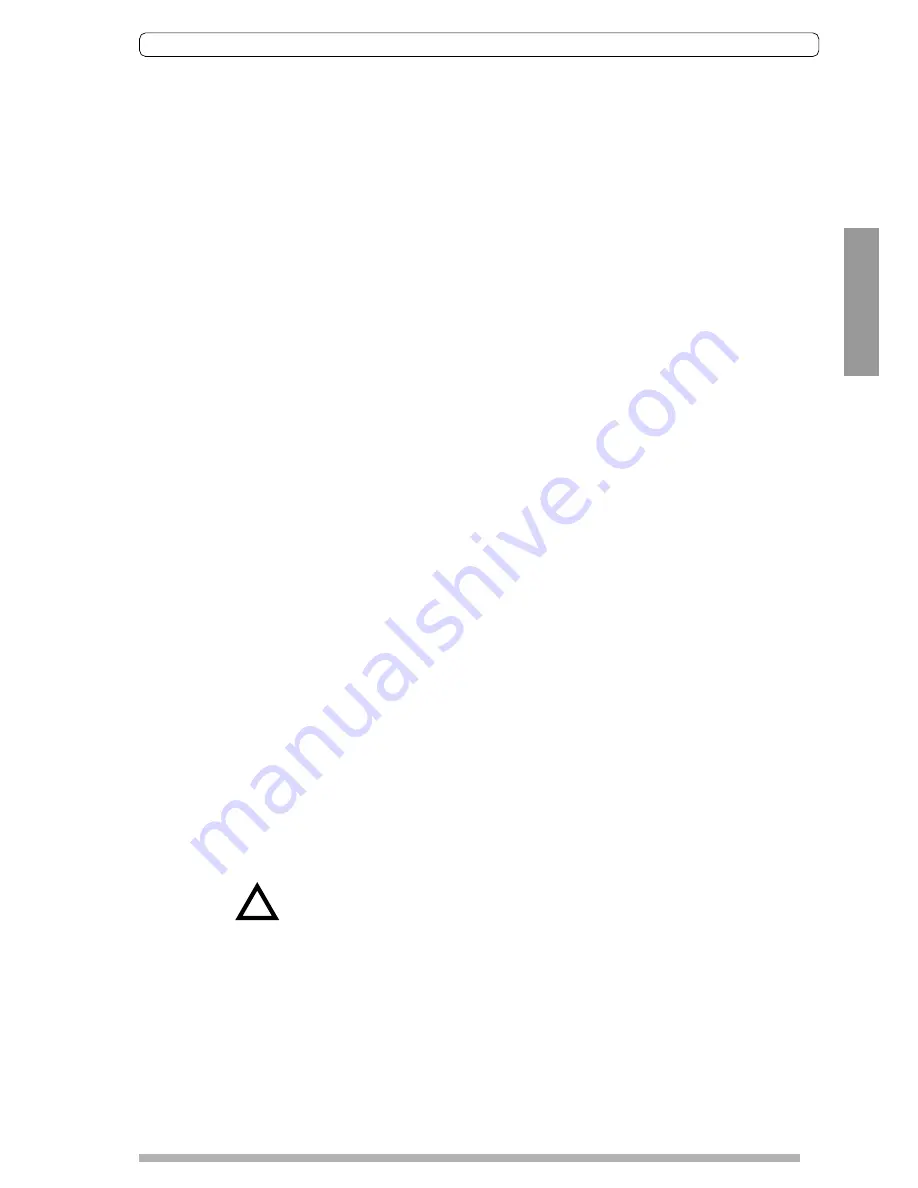
Rotavator 300
21
ENGLISH
!
Operational advice
Insufficient Depth Obtained
(a)
adjust depth control equipement
(b)
insufficient power : use lower tractor gear, reduce rotor speed
(c)
chaincase on hard soil. Further passes required
(d)
blades “trowelling” (rolling over ground), increase rotor speed or use lower tractor
gear
(e)
blades incorrectly mounted
Tilth too fine
(a)
raise trailing boards
(b)
use a faster tractor gear
Tilth too coarse
(a)
lower trailing boards
(b)
use lower tractor gear
(d)
wait until soil is drier if sticks
Blades “Ballinq up” with soil
(a)
ground too sticky for working
(b)
raise trailing boards
(d)
decrease tractor speed
Excessive Blade Wear
(a)
replace loose or bent blades
Rotavator “Bumping” on Ground
(a)
obstacles entangled in blades
(b)
blades incorrectly mounted with no scroll effect or blades fitted with blunt edge leading
or broken blades
Obvious Points
(a)
ROTAVATOR not level - cutting too deep on right side. Shorten right hand tractor lift
rod or adjust depth control wheel
(b)
Not overlapping - drive closer to last run
(c)
Working on hillsides. Work up the slope if possible. If lateral work cannot be avoided,
work from the top to the bottom in order to limit any terracing effect.
Rotavating
1.
When operating the Rotavator the most suitable practice is to work in “lands”
2.
The ROTAVATED ground should always be to the right of the driver.
3.
ROTAVATING the field headlands should not be carried out until the “lands” have
been completed.
4.
Always raise the Rotavator before turning.
THE ROTAVATOR SHOULD NEVER BE
LOWERED WHILST THE TRACTOR IS TURNING.
















